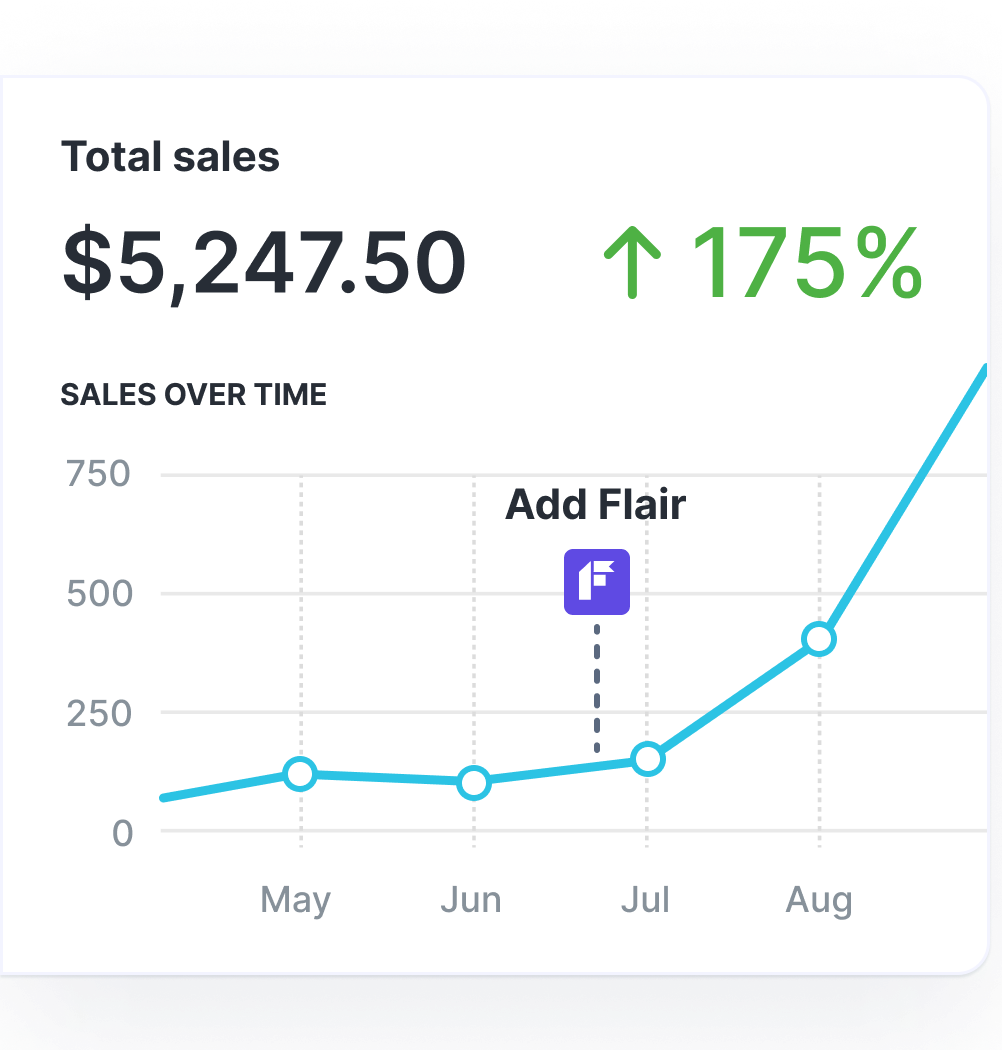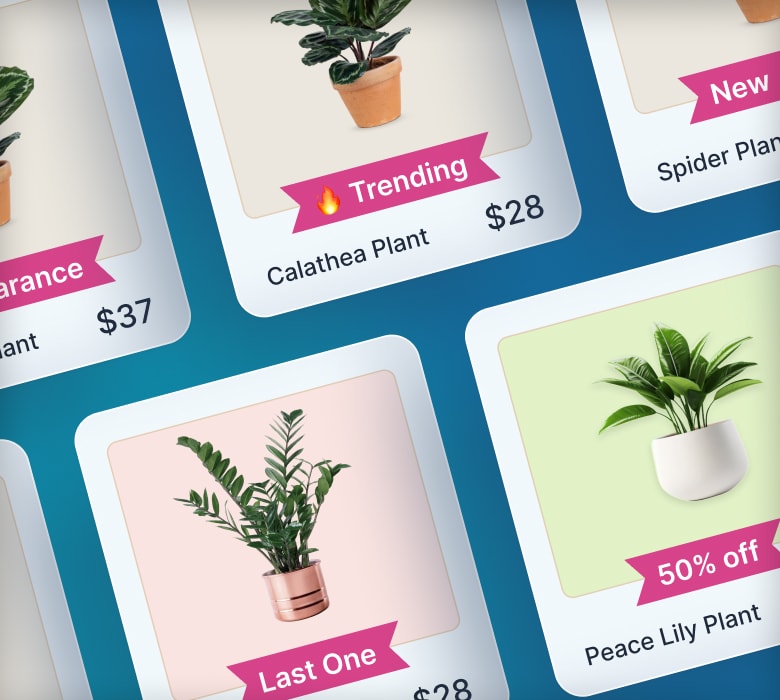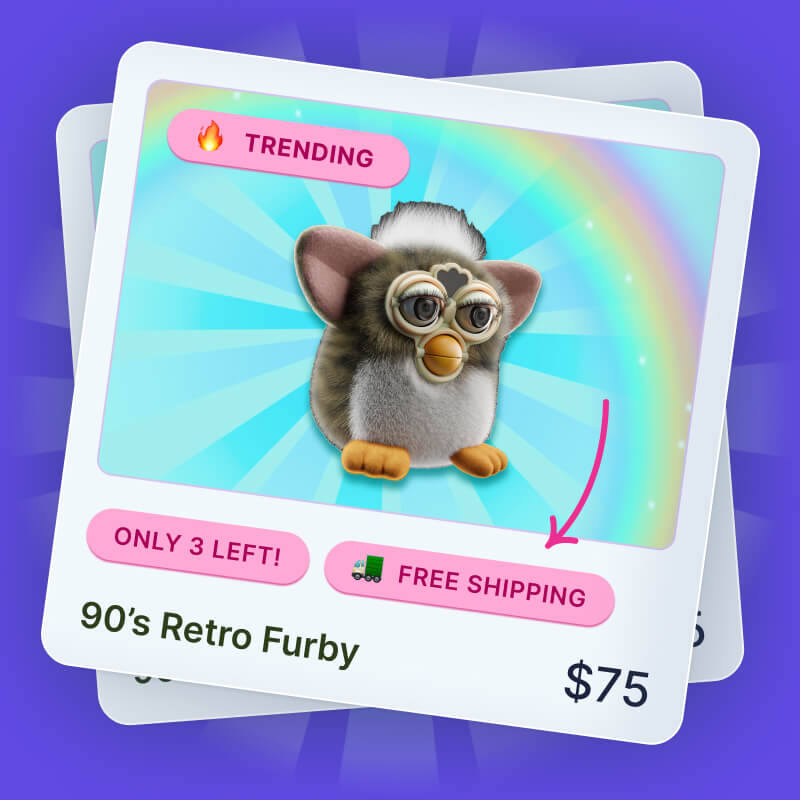Dropshipping: The Definitive Guide

Interest in dropshipping has surged in recent years as a growing number of would-be e-commerce tycoons leverage the business model to sell products online.
This growing demand is reflected by the ever-rising value of the global dropshipping market, which is expected to be worth over $475 billion by 2026 — representing a near-fourfold increase since 2020.
Many budding entrepreneurs are attracted by dropshipping’s low barrier to entry and minimal startup costs. But is it the right choice for you?
In this guide, we’ll help answer that question by discussing:
- What dropshipping is (and how it works)
- The pros and cons of dropshipping
- How to start a dropshipping business
Let’s get into it…
What Is Dropshipping?
Dropshipping is a method of retail fulfillment.
Unlike in “traditional” e-commerce, dropshipping doesn’t require the seller to handle products themselves. Instead, their store acts as a middleman between the customer and a third-party supplier.
How Does Dropshipping Work?
Dropshipping works as a process involving three parties:
- The dropshipper, who operates a storefront selling products
- The supplier, who handles and ships the products on behalf of the dropshipper when orders are placed
- The customer, who buys the product from the dropshipper
At this point, you might be wondering: if the dropshipper doesn’t actually supply the product, how do they make any money?
It’s a (sort of) simple answer. When a customer purchases something from a dropshipping store, they pay the retail price, as dictated by the dropshipper. To fulfill the order, the dropshipper then buys the product from their supplier at a cheaper wholesale price.
The difference between the retail price and the wholesale price (plus any other associated costs) is the dropshipper’s profit margin.
To dig a little deeper into what dropshipping is and how it works, let’s take a look at the main similarities and differences between dropshipping and traditional e-commerce…
Similarities Between “Traditional” E-Commerce and Dropshipping
When we talk about traditional e-commerce, we mean the way that a retail website like Home Depot operates. It involves:
- An e-commerce website
- Marketing and promotion
- A checkout
- Shipping products to customers
This is identical to how a dropshipping store works, but with one key difference…
Differences Between “Traditional” E-Commerce and Dropshipping
Traditional e-commerce retailers might have dozens of warehouses across the US containing literally millions of products.
When they receive an online order, they automatically source the product(s) from one of those warehouses, pack it, and ship it to the customer. That’s basically how things have worked ever since the inception of e-commerce.
Dropshipping is different, because — as we know — the dropshipping store never actually handles the product.
Instead, the dropshipper sources the product from their supplier, who then does all the packing and shipping.
What Are the Pros and Cons of Dropshipping?
Because dropshipping doesn’t force sellers to deal with any complex stuff like manufacturing, warehousing, or shipping, it’s often seen as an easy way to make money online, fast.
Some sources even make it sound like a get-rich-quick scheme.
Of course, the reality is a little different.
If dropshipping was a city, it’d certainly have some rich neighborhoods, but the streets wouldn’t be paved with gold.
Let’s consider the main pros and cons of dropshipping…
Benefits of Dropshipping
- Low barrier to entry. Just source your suppliers, build an e-commerce store, and you’re good to go!
- Little upfront capital required. You don’t need to purchase (or store) any products, so you just need to cover the cost of building a website.
- No logistical headaches. Shipping is a complicated business, especially when it involves sending products between countries. But as a dropshipper, it’s not your problem.
- Huge product selection. There are tens of thousands of dropshipping suppliers out there stocking a vast range of products — and you can sell any of them.
- Easy testing. Not sure if a new product will sell? With dropshipping, you might as well test it; it won’t cost you anything.
- Low overheads. You just need to keep your website online and cover your marketing costs.
- Work from anywhere. Because you don’t have to worry about buying, storing, and shipping products, you can run a dropshipping business from anywhere with an internet connection.
- Easier to scale. Really, the only barrier to growth is how much time and money you can afford to spend on marketing your store.
Drawbacks of Dropshipping
- Low profit margins. The biggest disadvantage of dropshipping is that your suppliers will take a big chunk of your sales. Some dropshippers still maintain profit margins of 70%+, but most are closer to 10% – 20%.
- High competition. Given the low startup costs, there are lots of other dropshippers out there (2.5+ million, by one estimate). So the competition is intense.
- Limited customization and branding. With tight product margins and no product exclusivity, it’s hard for dropshippers to stand out from the crowd.
- Handling customer support. While you’re not responsible for shipping products, you can’t just ignore your customers once they place an order.
- Suppliers make mistakes. They’re only human. Unfortunately, your store is the public face — so when things go wrong, you’ll get the blame.
- No quality control. Because you never get your hands on the product, there’s little you can do to guarantee quality.
- No fulfillment control. Your customers want their new purchase fast, but you’re totally reliant on your suppliers to make that happen.
- Inventory issues. You might not have up-to-date information on inventory levels, so there’s always a chance someone could place an order, only to learn the product isn’t in stock. Which reflects poorly on your store.
How To Start A Dropshipping Business In 5 Simple Steps
Sure, dropshipping isn’t perfect. But there are plenty of dropshippers out there making big money. Think you could become one of them? Here’s how to start your dropshipping journey…
- Choose a Business Concept
While it’s theoretically possible to build a profitable dropshipping store that sells anything and everything, you’re far more likely to see success by choosing a business concept and “niche-ing down”. Here’s what that looks like:
| Niche type | Dropshipping store concept |
| Broad niche | Sports equipment |
| Specific niche | Golf equipment |
| Micro niche | Golf bags |
The more specific your niche, the smaller your target audience will be — but you’ll also face far less competition, making it easier to drive traffic and sales.
Let’s explore a real-world dropshipping business that’s found the perfect niche.
Kawaiies sells toys, clothing, home decor, and accessories. But there’s a twist, because all its products are inspired by kawaii, a Japanese word that means something like cute, tiny, and lovable.

That’s a pretty specific market, right?
Because there aren’t too many other stores selling similar products, Kawaiies dominates the search results for terms in its niche.
Just look at all these juicy top-three rankings for keywords about “plushies”:
Their efforts are clearly paying off, as you can see from their organic traffic growth over the past couple years:
Those sorts of results wouldn’t be feasible in a more general niche with far higher competition — at least, not without a huge marketing budget.
Pro tip: Low competition is good, but no competition is bad. If there are barely any other e-commerce stores targeting your proposed niche, that’s likely because the audience is too small and/or the products don’t sell. Even if you generate some early results, you’ll hit the ceiling fast.
- Select Suppliers
Okay, so you’ve chosen a low-competition niche with a ton of growth potential. Now it’s time to find suppliers selling the types of products your audience will love.
However, you need to consider more than just their product inventory.
The reputation of your dropshipping store is largely reliant on the quality and reliability of your suppliers — if they constantly ship broken products and fail to meet agreed fulfillment times, you can kiss goodbye to your chances of building a loyal customer base.
Ask yourself the following questions when weighing up potential suppliers:
- Do they have good reviews? It’s probably a red flag if you can’t find any reviews.
- What do other dropshippers say about them on platforms like Quora and Reddit?
- How long does it take them to fulfill orders (from sale to delivery)?
- What are their policies on returns and damaged products?
- Do they insure orders?
- Do they offer protection against fraud?
- How good is their customer support? Feel free to ask them some questions to test this out.
Now, let’s discuss how to find those all-important dropshipping suppliers…
How To Find Dropshipping Suppliers

- Search dropshipping directories. Directories like Worldwide Brands and SaleHoo offer directories of wholesale suppliers (although they charge an access fee).
- Browse dropshipping marketplaces. Most dropshippers find suppliers through sites like Alibaba, AliExpress, and CJdropshipping, which are free to browse and feature a frankly astonishing range of dropshipping products.
- Reach out to manufacturers directly. Found someone who makes a product you love? Get in touch to see if they’re interested in becoming your dropshipping supplier.
- Attend trade shows. Look out for dropshipping and e-commerce trade shows in your area — they’re often full of suppliers, plus you get to view the products in person.
- Buy from your competitors. Get sneaky by purchasing from a rival in your niche, identifying the supplier from the return address, then dropping them a line.
- Build an Online Store
Now for the fun part: designing and launching your dropshipping store!
Unless you fancy coding everything from scratch (hint: you don’t), your best bet is to use an e-commerce platform such as:
We prefer Shopify, because its prebuilt themes make it comparatively quick and easy to create a professional-looking store without requiring any technical skills.

For a step-by-step guide to building an e-commerce store with Shopify, check out our Quick-Start Guide to Selling on Shopify.
- Register Your Business
Even if you view dropshipping as a side hustle or hobby, it’s still a business, so you need to register it as such.
We’re e-commerce experts, not lawyers or tax accountants, so we can’t tell you exactly what to do. But we can outline three common business structures (NB if you’re not in the US, they might have different names)...
- Sole proprietorship. This is the simplest (and cheapest) model, with no complex tax requirements — you just submit your business earnings through your personal taxes. On the downside, sole proprietorships offer no personal liability protection, so if you get sued, you might end up losing your personal assets. Eeeek.
- Limited liability company (LLC). With an LLC, your business is a separate legal entity, offering greater — but not total — protection for your personal assets if things go horribly wrong. Setting up an LLC requires paying incorporation fees and other ongoing costs, and you may be subject to additional filing requirements.
- C corporation. This structure is really for major businesses rather than individual dropshippers. It offers the highest level of liability protection, but it’s expensive to incorporate and run.
For simplicity’s sake, most dropshippers choose one of the first two options, but consider speaking to a lawyer before making your mind up.
- Promote Your Dropshipping Store
By this point, your store is live and you’re ready to trade, so it’s time to start bringing in the customers. Here are a few potential methods for promoting your dropshipping website:
SEO
Optimizing key web pages around your target keywords and growing your authority by building backlinks can help you build a sustainable traffic stream. But it takes time, with almost 95% of pages failing to make the top 10 within a year of being first seen by crawlers.

Content Marketing
Whereas SEO tends to target broad keywords in your niche, content marketing (often) involves chasing more specific long-tail terms. These words and phrases are less competitive, which makes them easier to rank for.

Pro tip: Want to drive high-intent traffic? Try targeting commercial terms such as the ones featured below.
| Commercial keyword type | Example |
| Best {product type} | best golf clubs |
| Best {product type} for {characteristic or pain point} | best golf clubs for beginners |
| Product comparisons | taylormade p790 vs titleist t200 |
| Product reviews | taylormade p790 review |
Social Ads
Social media platforms aren’t just for arguing with strangers — they’re also a major source of product inspiration. Running social ads allows you to target potential customers who meet your buyer personas.
You can launch a basic social campaign in just a few minutes, helping you generate traffic and sales fast. But that traffic will vanish if you stop investing in ads.
Paid Search Ads
Also known as PPC ads, paid search ads appear in (some) Google results:

They’re a fantastic way to generate qualified traffic, because they only appear to people who are searching for specific keywords.
However, click costs can stack up fast, with the average cost per click across all industries standing at $4.22. Given the tight margins facing many dropshippers, paid search ads might not be affordable in your niche.
Email Marketing
Email has the highest return of any marketing channel at $36 for every $1 spent, which is pretty incredible. Use online forms and popups to build your email list…
…then reach out to subscribers with your latest content and product recommendations.
Communities
Every niche has some kind of online community where enthusiasts hang out, share tips, ask questions, and hype up their favorite products. You can find them on:
- Niche-specific websites
- Quora
- Facebook Groups
The best thing about these communities is that they’re almost always free to join, allowing you to reach a highly relevant audience without spending a cent on ads. Just don’t be too salesy because you’ll likely get kicked out.
Is Dropshipping Right for You?
Dropshipping can be profitable, convenient, and fun. But it’s also extremely competitive, and it certainly won’t make you an overnight millionaire — in fact, we’ve even seen claims that 90%+ of dropshipping businesses fail in the first 30 days.
In our experience, successful dropshippers tend to share most or all of these characteristics:
- A keen eye for spotting in-demand and trending products
- Some level of knowledge and interest in a specific dropshipping niche
- Able to build strong working relationships with suppliers (who are often based in different countries)
- Capable of promoting brands and products with limited marketing budgets
- Happy not to have total control over the sales and fulfillment process
Alternatives To Dropshipping
Of course, dropshipping is far from the only way to make money online. If you don’t fancy the life of a dropshipper, consider these alternatives:
- Traditional e-commerce. Don’t want to rely on dropshipping suppliers to handle fulfillment? Buy products from wholesalers and deal with all the shipping yourself!
- Drop servicing. As the name suggests, drop servicing is just like dropshipping, except you’re selling services from a third-party supplier rather than products. Common drop services include logo design, lead generation, and social media management.
- Print on demand. A type of dropshipping model where products — such as clothing, accessories, and posters — are only produced when orders are placed.
- Affiliate marketing. Like dropshipping, affiliate marketing has a low barrier to entry and minimal costs, but you earn commissions from recommending other people’s products rather than selling your own.
- White labeling. This model involves selling generic products marked up with your brand.
Think traditional e-commerce is the best route for you? Check out our guide on How to Make Money on Shopify (15+ Amazing Ideas)!
Other FAQs
How Much Work is Involved in Dropshipping?
Dropshipping doesn’t require as much work to get started as a traditional e-commerce business because you don’t need to invest in store inventory. However, you still need to find a profitable niche, source dropshipping suppliers, and build an e-commerce store. And once you start generating sales, you need to handle any customer queries or complaints.
Is $100 Enough To Start Dropshipping?
You can start dropshipping for $100 or less by signing up for a Shopify free trial and taking advantage of free ad credits from Facebook and Google (if you can find an offer). However, when your freebies expire, you’ll need to spend money every month on promoting your store and paying for your e-commerce platform (e.g. Shopify pricing starts at $29 per month).
How Profitable is Dropshipping?
Dropshippers can typically expect profit margins of around 15% – 20%. So if you sell a $100 product, you’d earn up to $20 yourself, with the rest going to your supplier and to cover other costs (like maintaining and promoting your dropshipping store).
Is Digital Marketing Important for Dropshipping E-Commerce?
Yes, digital marketing is extremely important for dropshipping. Given that the profit margins are tight, you need to make every cent of your marketing budget count. Most dropshippers rely on a variety of marketing channels, including SEO, paid social and search ads, and email marketing.

Grow Your Shopify Sales by over 175% with Flair
-
Increase sales using product badges and sales banners
-
Maximize conversions with scarcity, urgency and countdown timers
-
Automate promotions with targeted rules and scheduling












